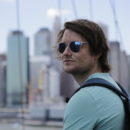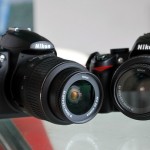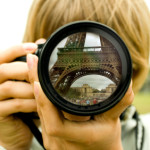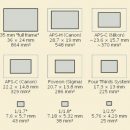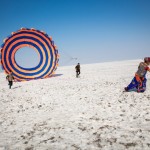Photography is all about light.
Like our eyes, without light the camera’s sensor won’t be able to see any details. In its purest sense, light is the most important thing in photography. Knowing the various types of light that can be used in creating images is beneficial in improving your skills as a photographer.
Ambient Light
The most common light source is ambient light. Whenever you take a picture without adding an additional light source, an example of which is a strobe, you’re using the ambient light or available light. The sun is the most powerful ambient light available. More often than not, a lot of new photographers don’t utilize this light source enough.
A common mistake by a lot of aspiring photographers is shooting with the sun directly above. This will result in harsh photographs, too-bright highlights and dark shadows. The ideal time to shoot is during the golden hour, the first and last hour of sunlight during the day, which produces a more pleasing photograph. The angle of the sun during these times creates a more diffused light resulting in a nice balance of highlights and shadows.
Landscape photographers like to shoot during the golden hour to produce images with a nice warm hue that is pleasing to the eyes. However, this doesn’t mean that you should always shoot during the golden hour. You can manipulate the light at noon to produce pleasing pictures too. One of the easier ways to go about this is to shoot your subject in the shade. Instead of directly using the harsh sunlight, you use the reflected light from the ground and wall. The diffused light coming from these can do wonders for your subject.
Artificial Light
Natural light is a very good source of lighting but there will be instances wherein you must use an external light source to achieve the output you want. Not enough ambient lighting and subject-background separation are just some of the various reasons you might want to use an external light source for your images.
There is a wide variety of artificial lighting available to all photographers. The most common is your camera’s built-in flash. Almost all cameras have built in flash except for high-end ones, Canon’s 1D and Nikon’s D3 series to name a few.
Built-in Flash
The built-in flash can get you some good images but there is a reason why the pro-series cameras don’t have it; it doesn’t pack a punch compared to a dedicated external flash. Some downsides of using the built-in flash are lens shadow, red-eye, harsh shadows and weak light output. You can still use your built-in flash but please use it with care and moderation.
Now that we have taken care of that, let’s talk about the good stuff, external flashes and strobes. Proprietary flash heads made by camera manufacturers are a bit on the high side with regards to pricing. Canon’s 580EXII, its flagship external flash, can go for at least $450. The same goes for the other major camera manufacturers. You can literally add just a hundred more and buy an entry-level DSLR.
Why is it expensive?
So why is it expensive? Versatility. The amount of things you can do with an external light source is worth the price alone. It has a lot more power and range compared to your built-in flash. Faster recycling time means more images captured at in a small span of time. Another worthy feature is its off-camera-flash or wireless capability. By using this feature, you can achieve studio like portraits just by your external flash alone.
Studio Light
Another well used external light source is the studio light. This has much more power compared to the external camera flash. As a result, it is bulkier and requires an electric outlet to work. This type of lighting is more suited for studio work but you can get a battery pack to use it outdoors. The price range of this can go as low as $200 up to $2000.
Whether you’re using ambient light or an expensive studio light, your images are still highly dependent on your creativity. Remember, no amount of expensive gear can make your photographs into instant award winning pieces. In the end, knowing how to use the light is the best knowledge you can have.
Do you have any lighting tips for photographers? Let us know in the comments.

